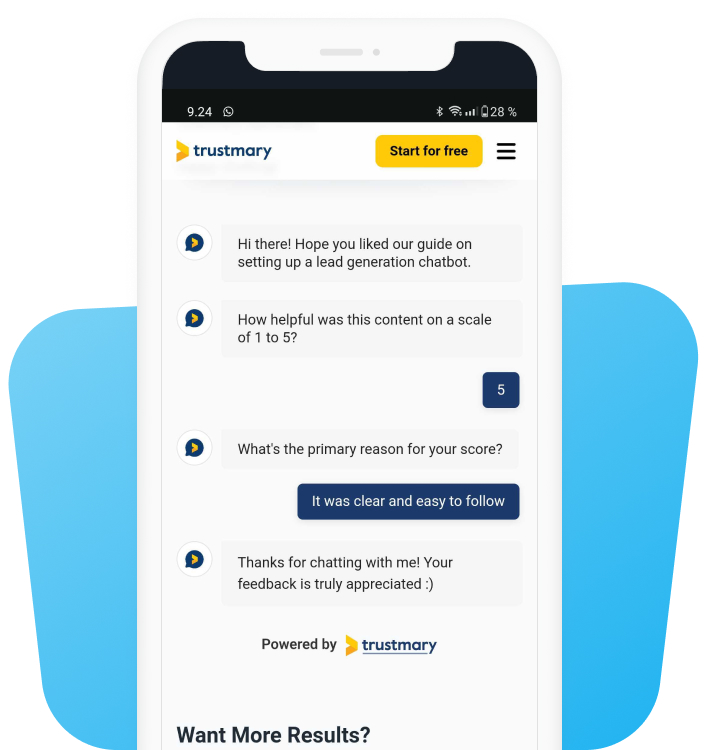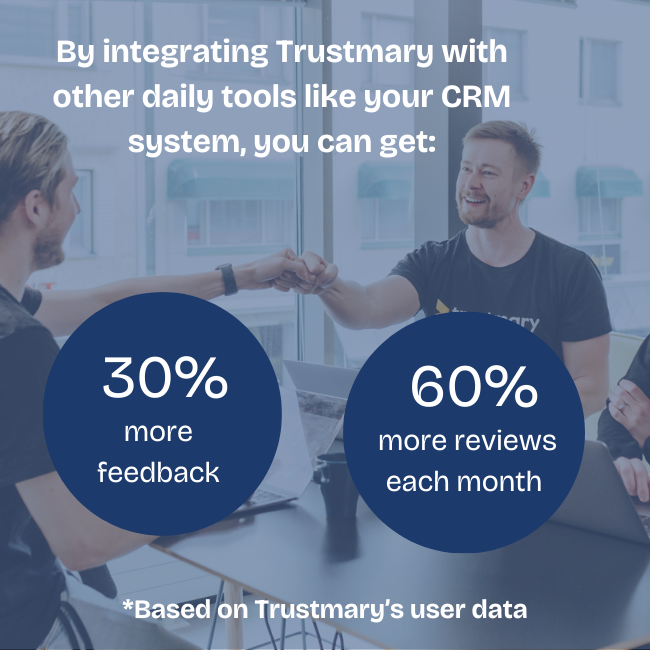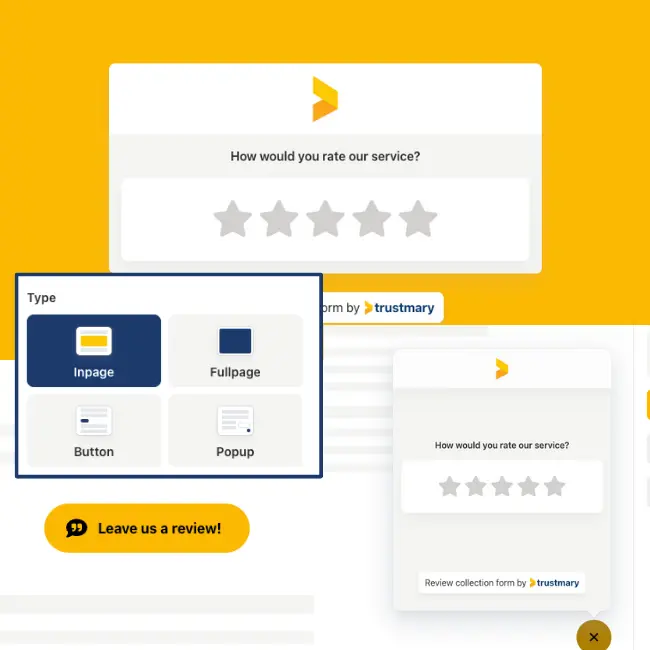3 Templates for Customer Satisfaction Questionnaires

Customer feedback is what enables you to really grow.
Sometimes it can be difficult to create engaging customer satisfaction questionnaires that make people want to answer them.
In this blog, I present to you 3 innovative customer satisfaction survey ideas that you can copy.
Characteristics of Good Satisfaction Questionnaire
Before we get to the templates, let’s see what kind of things make a good customer satisfaction survey.
My colleague Erica Ylimäki made a video about this, where she went over the common pitfalls of customer satisfaction surveys as well as how to easily create the perfect survey.
You can use this list for planning your own questionnaires.
Short and Concise
Have you ever opened a survey and instantly gone “Heeellll nawwww this is too long!”
I have, for sure. I know better ways to spend the next 15 minutes.
People don’t have a lot of time or motivation to fill out an extensive customer satisfaction survey, unless you compensate for it.
Similarly to using incentives to get reviews, paying customers to complete surveys will skew the results and turn the actionable data from the target audience into absolute garbage.
If you are looking for regular feedback from your customers, it’s best to keep the satisfaction survey short and concise.
1-3 customer feedback questions are enough.
Timely
Part of what makes a survey easy to answer, is to choose the right timing.
If you are looking for information on first impressions, you can’t wait several days to let the customer talk about it.
On the other hand, if you want to know how the first 2 weeks of using a new product are going, you can’t send the survey in advance and hope the customer will get back to it later.
Use different distribution channels to get responses.
- Email surveys
- QR code surveys for physical products
- Email signature surveys
- WhatsApp surveys
Accessible
Make sure that the customer satisfaction survey questions are understandable, and that there are no alternate interpretations for them.
Of course, you will be surprised how differently people interpret your questions anyway, but trying to make them simple should prevent wildly irrelevant responses.
In case you have customers from different countries, it’s a nice addition to have a survey in multiple languages! That makes it easier to analyze the customer sentiment when different languages are in separate reports.
Tells you Something Valuable
Now, you might have different needs at different times.
Sometimes you want to measure overall satisfaction, and sometimes you need insights into specific details in the customer journey.
For some stakeholders, you want to present the customer satisfaction trend over time, but for the management team, you need open ended responses to help them understand what the customers feel like.
That’s why you should have different customer satisfaction surveys available, and send them at the correct time.
These surveys should be a mix of:
- Multiple choice questions
- Open ended questions
- Likert scale questions
- Custom survey questions if needed
The goal is to get to the bottom of how customers feel and think.
Let's move on to three templates and which customer satisfaction survey questions to ask.
Template 1#: NPS + Video Survey
Net Promoter Score (NPS) is a handy metric for overall customer satisfaction.
A net promoter score question is simple:
How likely are you to recommend this service for a friend or colleague?
The customer gets to pick one answer between 0-10, and based on the score, they are labeled as a Detractor (0-6), Passive (7-8) or Promoter (9-10).
The NPS result is calculated by subtracting the percentage of Detractors from the percentage of Promoters, and reported with a number between -100 and +100.
You can see with one glance whether you have more satisfied customers than dissatisfied ones (if the result is anything above 0).
Easy, right? Test the template below:
Additional Tips for Using NPS Surveys
If you want to get more specific information on customer satisfaction in different touch points, you can add more questions to your questionnaire.
When you want to gain insights about the true customer experience, close-ended survey questions can be a limitation.
How can anyone tell what they feel if the questions don’t ask the right questions?
I recommend you include one question that allows your customers to say something in their own words.
Why did you choose this score?
However, most people hate writing customer feedback to answer open ended questions. At least I do.
So, give your customers a chance to leave their comments as a video review!
The best thing: if loyal customers leave positive feedback, Trustmary's customer satisfaction survey template asks if it can be used as a public testimonial.
Win-win!
Try creating your NPS survey and send it to customers to start measuring customer loyalty.
Template 2#: Chatbot Survey
Satisfaction surveys can be quite static sometimes.
What if you included the survey in a live chat or chatbot?
This way you could guide the customer to leave feedback in a more conversational manner.
You can still add the regular question types, but you can have the chatbot react to them, which signals empathy and that you are willing to fix their problems.
Here’s an example:
The logic of the above chatbot survey is that when the respondent gives a satisfaction score of more than 7, they get an enthusiastic reaction and a possibility to leave open feedback.
If they give a score of 6 or below, they get an apologetic response and a possibility to elaborate, as well as submit their email if they want someone to be in touch with them.
When you script a good chatbot conversation, you have a possibility to really diminish your own workload and increase customer satisfaction.

Template 3#: Multiple Choice Survey
Want to make answering the customer satisfaction survey easy and effortless, but also learn what exactly the customer likes and dislikes about the buyer’s journey?
If you answered yes, try multiple choice surveys.
Ask two questions:
- Which aspects of the experience are you satisfied with?
- Which aspects of the experience journey are you dissatisfied with?
Under each question, give a list of things you want insights about.
They can be touch points and things like quality of customer service, expertise of the staff, answer time, help documentation, website, using the product, finding the establishment, etc.
Whatever is relevant to your business!
Filling in this survey only takes seconds, and you can already get an overview of what customers like, and what should be improved.
Try it yourself:
Distributing Customer Satisfaction Surveys
Depending on what you are measuring and asking, there are different options for distributing the survey.
In order to get timely answers to satisfaction surveys investigating a specific topic, it is best to send emails after the interaction with the customer.
This is easily done by setting automation and integrating your surveys with other systems, like CRM.

If you meet your customers face to face, you can ask them to scan a QR code and fill in the survey.

Of course, paper forms are still an option, too.
Another option is to embed the survey on your website. Place a chatbot survey to the check out page, where you can ask for the customer’s feelings right after making a purchase.
Ways to Send Surveys
- Email embedding and sending
- SMS or WhatsApp surveys
- Email signature surveys
- In-app surveys
- QR codes
- On website as popups on in-page
Create your next survey, or your very first, with Trustmary to use all these methods!
Collect Customer Feedback
How can you start using these questionnaires and customer review forms?
All the above templates can be done with Trustmary’s survey builder and chatbot widget.
Start using Trustmary, and see instructions for creating a survey and making a chatbot.
You can distribute the surveys via email, QR-code, or embed them on your website.
It is possible to set up automated feedback surveys and integrate Trustmary with your CRM of choice.
Benefits of Collecting Customer Feedback
- Manage customer expectations
- Improved customer loyalty
- More feedback for customer service team on level of work
- Higher customer retention when people are happier
- Regular customer satisfaction data
- Creating and implementing a strategy for how to handle difficult customers
We are happy to help you get started!
Further Reading
- Actionable Guide to Measuring and Analyzing Customer Satisfaction in 2025
- The Ultimate Guide To Surveys
- The Ultimate Guide To Customer Experience
- Net Promoter Score: The Definitive Guide to NPS
FAQ about Customer Satisfaction Survey Template
How to measure customer satisfaction?
The best way to measure customer satisfaction is to conduct feedback surveys and ask for your customer’s honest opinions.
How to make customer satisfaction surveys?
Making customer satisfaction surveys is not complicated, but managing the data can be. That’s why you should look into feedback software. You can create, distribute, collect data, store data, get reports and draw conclusions on the same platform.
What is a good customer satisfaction survey?
A good feedback form is short enough, sent on the right time, made understandable, and asks the right questions. If you want to conduct longer satisfaction surveys, you should offer some kind of incentive or compensation for the trouble.
What are good customer satisfaction survey questions?
The questions should be easy to understand and answer. If you want to find out an overall satisfaction level, you can ask e.g. “How satisfied on the scale from 1 to 10 are you with the service today?”. If you want to find out more details about customer satisfaction, ask more detailed questions, like “Did you like the customer service? How would you describe the experience? Are you happy with the product quality?” and so on.

